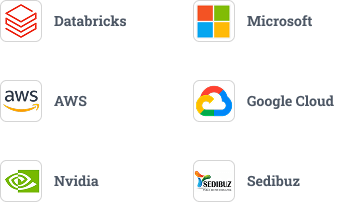2020 is a year that will always be etched in the history of mankind as a year of change, evolution, and global catastrophe like none other.
The COVID-19 pandemic challenged the existing systems and processes across the world and not just healthcare. From full-time remote working to distance learning, the world has realized that if not for technology, surviving a pandemic would not be easy.
Challenges post the pandemic
One of the biggest challenges now that we have sailed through the first wave and setback of COVID-19 is flattening the curve, preventing it from spiking, and eventually dropping it. As the world reopens slowly, as it should, the healthcare systems can breathe a sigh of relief, but only if the outbreak remains in control. Preparing for a second wave (which has been already observed in a few geographies) as well as being future-ready for such health crisis will be on the agenda of decision-makers across the globe.
As the world crusades towards gearing up for a life of normalcy after the pandemic dies down, we have to also apprehend the fact that we need to be better prepared for such situations or worse in the future. The good news is, with technology and its impactful implementation, we can. Science is the only forward-looking solution that can help in mitigating such health emergencies in the future. Right since the outbreak of novel coronavirus in December 2019, there have been more than 2000 research papers describing the health impacts of coronavirus, possible treatments and vaccinations as well as its global repercussions.
AI to the rescue against the pandemic
Artificial Intelligence seems to be the most prevalent and conceivable solution for defeating this pandemic and the next. Currently, AI models are being widely adopted to fetch insights from several scientific results to discover a new line of treatments and speeding up symptom-based diagnosis in areas that lack aggressive testing systems.
AI seems to be immensely helpful in mining the research papers and comprehending useful data points and information. The AI-powered chatbots are being used as essential communication tools in telehealth, making patient care accessible while maintaining social distancing.
And while experts find newer ways to combat the current pandemic with the help of AI, it is safe to say that AI will help the world in ways more than one to be future proof.
Let’s see how:
Spotting the outbreak before it spreads with predictive analysis
Artificial intelligence is rapidly being used to analyze patterns of the virus and in future as well, and NLP (natural language processing) algorithms will be monumental in analyzing search trends, press reports, social media announcements and public health warnings issued by local, national as well as international governing bodies. With the help of AI, a probable outbreak can be detected before it spreads to length. In fact, even during the COVID-19 outbreak in December 2019, the first reports of a possible pandemic came from several AI-driven outbreak risk detection software. This predictive analysis can help in mapping air travel data to affected countries and help in quick segregation of possible carriers of infection. AI-driven predictive modeling can help in mapping the path of the spread of the virus, alerting hospitals and health authorities to start preventive measures sooner.
Personalized predictive analysis can help in deriving each individual’s probability of contracting and surviving an infection, which can further help in determining the time taken to develop herd immunity while ensuring lower death rates.
Improved diagnosis and medical care
One of the biggest lessons learned in the COVID-19 pandemic is the importance of quick and accurate diagnosis. With a limited number of testing kits and longer testing processes over vague and common symptoms that can appear with or without being infected by the coronavirus, the world has suffered. However, with Artificial Intelligence, machine-learning led models can come to the rescue in tracking human errors in diagnosis, picking traces of possible infections from medical imaging without even opting for regressive testing. Eventually, AI is estimated to detect COVID-19 using image recognition without going for a full-blown testing process, which is expensive as well as latent.
Healthcare workers are already making extensive use of AI-powered systems to detect and monitor the disease, and in a world post-COVID-19, this will be rapidly adopted for patient care to reduce the risk of frontline workers.
Resource allocation using ML
Optimizing healthcare resources and frontline healthcare workers for crisis management during a pandemic is extremely important. Machine learning can help in resource allocation by forecasting patient volumes, connecting this data to the hospital staffing to ensure adequate amounts of resources are allocated. Ambulances and other emergency care services can be strategically placed around areas that have a higher probability of needing them.
Development of drugs and vaccines
Not having a line of tailor-made drugs or vaccination has been one of the most problematic reasons that have come in the way of curbing the spread of COVID-19. Artificial Intelligence is helping in identifying drugs that can prove effective in the cure of COVID-19 using generative design algorithms. This can further aid in speeding up the process of vaccine discovery.
To Summarize…
The world is slowly and gradually accepting the new reality, but the anxiety prevails. As governments lift the lockdown and the restrictions, AI-powered medical care is sure to garner more interest in getting over the current crisis as well as preparing for the next.



